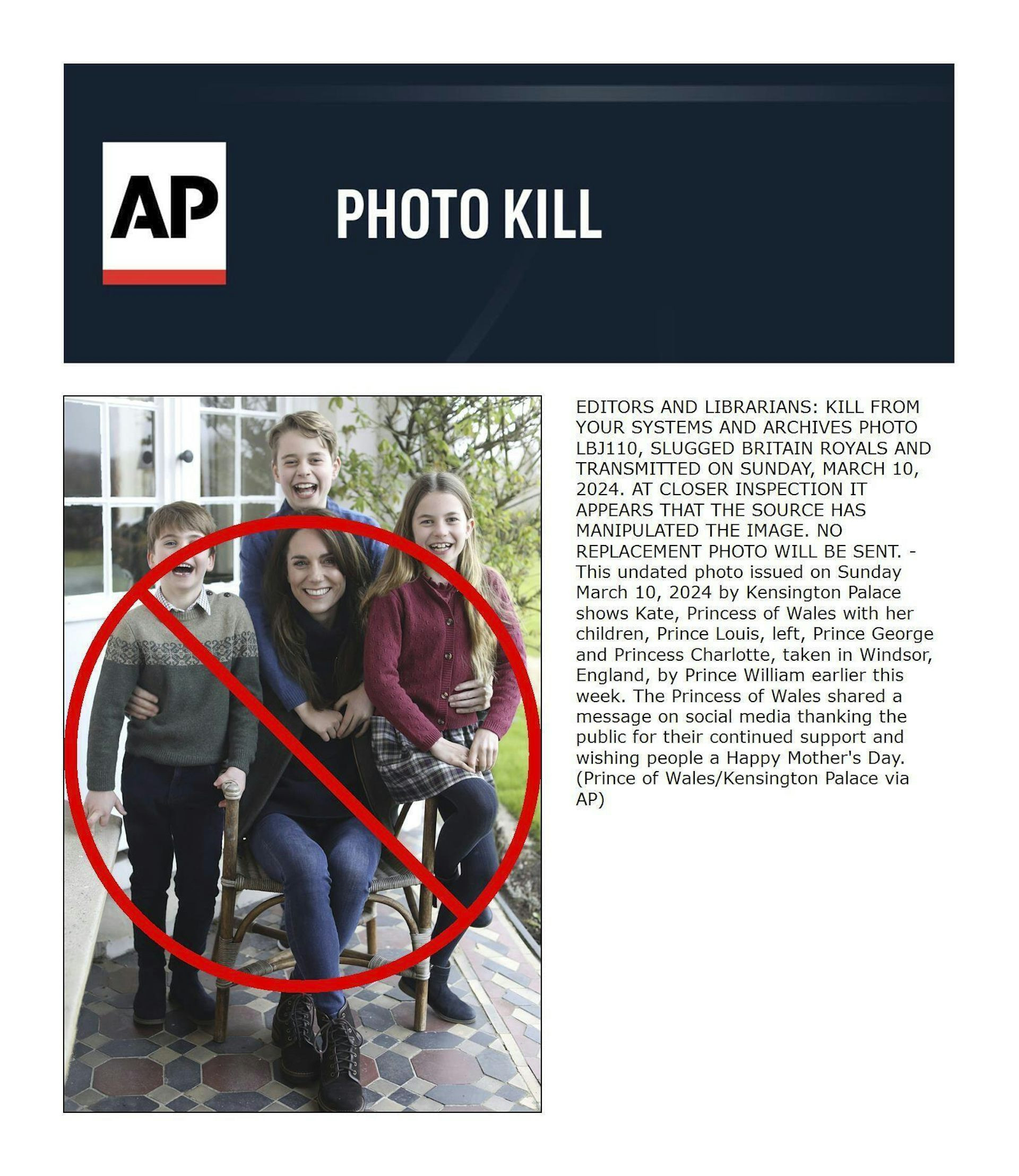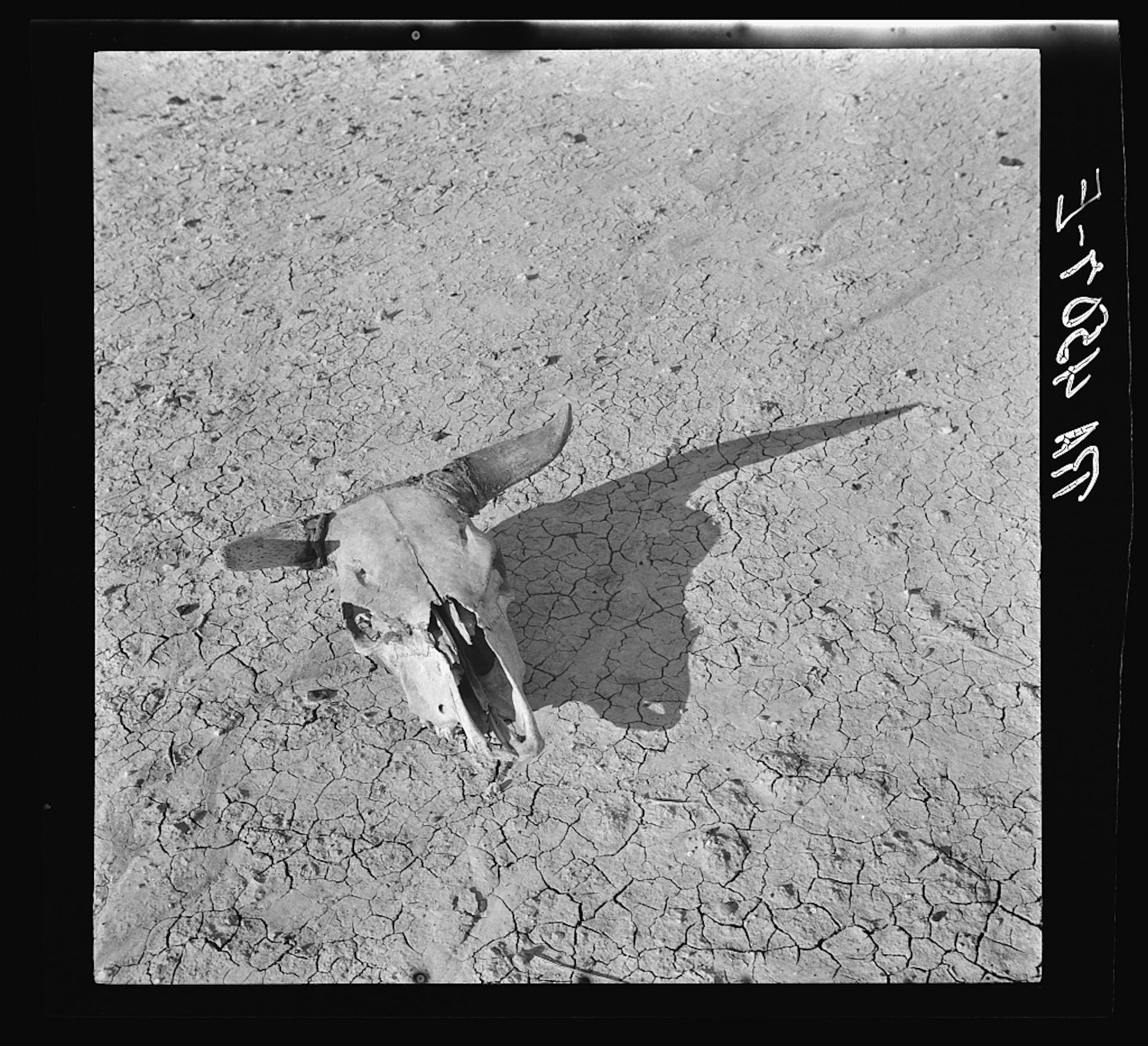On March 10th, coinciding with Mother’s Day in the UK, Kensington Palace released a photograph of Kate Middleton, the Princess of Wales, alongside her children. This image was intended to be the first public glimpse of Kate since December, and news outlets widely circulated the picture.
However, instead of quelling public curiosity, the photograph ignited a firestorm of speculation and controversy. Concerns about Kate’s well-being had been steadily growing. She hadn’t been seen publicly since Christmas Day, and the announcement of a planned abdominal surgery in January only intensified public interest.
Historically, the royal family has often released photos or videos of members recovering from medical procedures, setting a visual precedent for public reassurance. The absence of such images in Kate’s case created an information vacuum, which was quickly filled with online commentary and a surge of conspiracy theories.
 A notice from the AP of a photo kill with a photo of kate and her kids with a red line across it.
A notice from the AP of a photo kill with a photo of kate and her kids with a red line across it.
The release of the Mother’s Day photo seemed designed to address these mounting questions. Yet, almost immediately, social media users turned into digital detectives, scrutinizing every detail of the image. From inconsistencies in foliage suggesting out-of-season greenery, to mismatched clothing details, and blatant signs of amateur photo editing, the photograph quickly became the subject of intense online analysis. Adding fuel to the fire, Kensington Palace declined to release the original, unedited photo, further deepening suspicions.
This meticulous examination of the photograph, bordering on obsessive, stemmed from the context surrounding its release. The internet was actively seeking “proof of life,” and the heavily edited image failed to deliver the intended reassurance.
Within hours of its release, the Associated Press (AP) issued a “kill order,” retracting the photo with the statement: “it appears that the source has manipulated the image. No replacement photo will be sent.” Numerous other news agencies and photo organizations followed suit, withdrawing the image from circulation.
The following day, a statement attributed to Kate Middleton was released, acknowledging, “Like many amateur photographers, I do occasionally experiment with editing.” She apologized for any confusion the photograph had caused. However, this apology did little to quell the burgeoning “Kate Middleton photo drama.”
The Shifting Sands of Photographic Truth
Photography has always existed in a precarious space between objective record and subjective interpretation, truth and artistic license. Since its inception, photographic images have been staged, manipulated, and altered. The digital age has only amplified this malleability, providing tools that make image manipulation faster and more accessible. This inherent flexibility is woven into the very history of photography.
The power of photography lies in its ability to capture what the lens sees, a function that has established it as a source of truth and evidence in society. In fields like journalism, science, and government, photographs serve as proof, particularly where identification and verification are crucial.
However, the potential for manipulation necessitates trust in the institutions and individuals producing photographs. These entities are expected to verify the authenticity and extent of editing, essentially vouching for the image’s veracity. Organizations have developed standards, ethical guidelines, and verification processes to ensure photography maintains its credibility as a reliable source of information.
Public trust in photographs, therefore, hinges on trust in the institutions that disseminate them. This is not the first time a political entity has eroded public trust through photo editing. As the current controversy unfolds, public confidence in images released by Kensington Palace diminishes.
This erosion of trust was evident in the skeptical reaction to a subsequent photograph, purportedly showing Prince William and Kate Middleton in a car. Claims of further Photoshop manipulation quickly emerged, highlighting the deep-seated suspicion.
Institutional responses mirrored public sentiment. CNN announced a review of all previously released handout photos from Kensington Palace, and Agence France-Presse (AFP) declared Kensington Palace “no longer a trusted source,” underscoring the severity of the reputational damage.
The Fine Line of Editing
The #KateGate controversy has brought the question of acceptable photo editing into sharp focus: Where is the line between enhancement and deception? When does editing transform a photograph from improved to manipulated?
In contemporary celebrity culture, a degree of retouching is almost universally expected. Many smartphones even include “Beauty Face” filters designed to automatically enhance images. Celebrities who reject retouching, like Zendaya, are often praised for promoting authenticity.
In photojournalism, adjustments to color balance and exposure are common practice, considered acceptable if they enhance the accuracy of the representation without altering the content or composition.
However, practices like creating composite images, combining elements from multiple photographs of the same event, are widely considered to cross an ethical line. During the Great Depression, Arthur Rothstein’s photograph of a steer skull became controversial because he moved the skull to a more dramatic location, manipulating the scene for artistic effect.
 A black and white photo of an the skull of a horned animal on dry cracked earth
A black and white photo of an the skull of a horned animal on dry cracked earth
Rothstein faced criticism for staging the photograph, compromising the integrity expected of documentary photography. His defense, however, was that the relocated skull created a photograph that more accurately conveyed the essence of the crisis.
Despite photography’s complex relationship with objective truth, it is still expected to function as a reliable record of reality. Institutions lend credibility to photographs, enabling them to be used as “truthful evidence.”
The core issue in the Kate Middleton photo drama is that the image was presented as evidence of her well-being. Given the likely timeframe of the photo (potentially taken months prior), the extensive editing, and the refusal to release the original file, Kensington Palace’s response failed to adequately justify the level of manipulation, regardless of the intended reason. The incident serves as a potent reminder of the delicate balance between photographic representation, public trust, and institutional accountability in the digital age.
